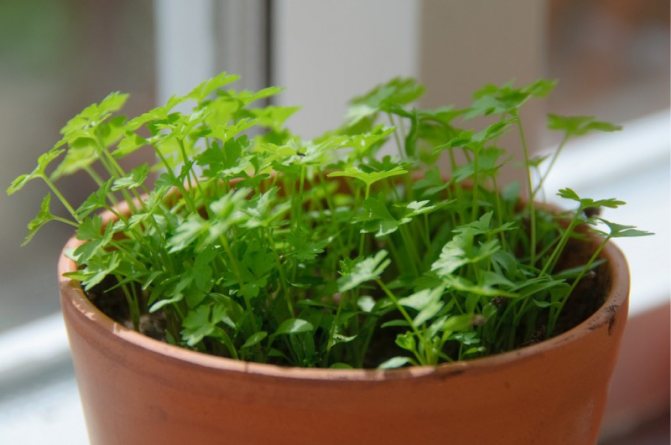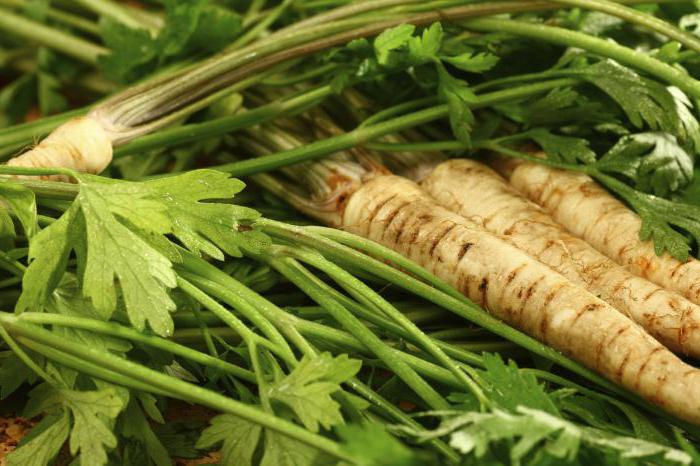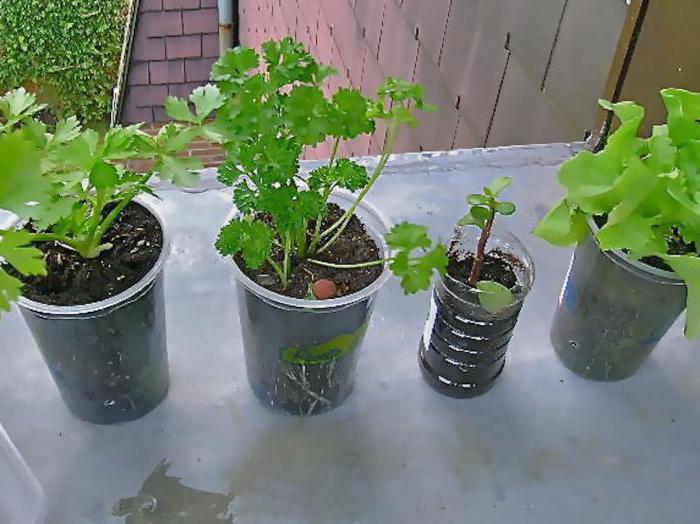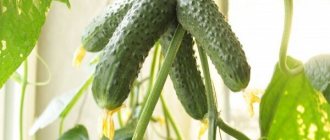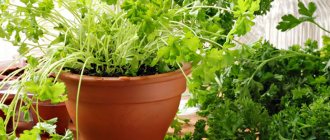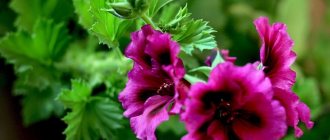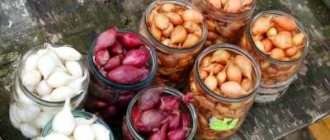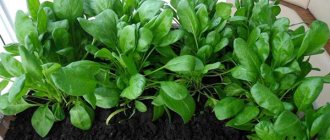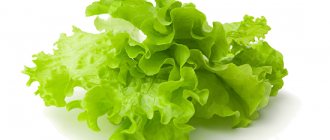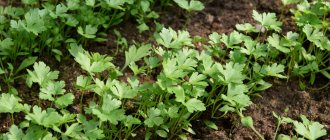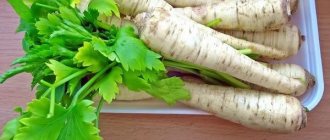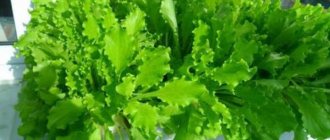Is it possible to grow parsley on a windowsill
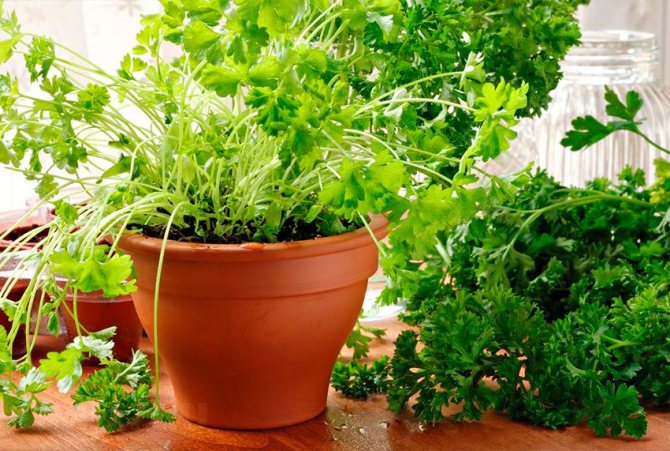
Parsley is a common herb used as a spice in many dishes. In winter, such greens can be bought at the grocery store or prepared in advance, prepared for long-term storage - freeze or dry. But, the aroma and taste of parsley left for storage is very different from fresh parsley. An alternative option is to grow it on a windowsill.
Such greens are classified as frost-resistant plants - if conditions are provided, you can get a crop even on the balcony. The minimum thermometer reading for growing such greens does not exceed 10ºC. But, before sowing seeds or planting roots in the ground, you need to carry out preparatory measures - choose a variety with a high yield, a place for a container, mix the substrate and buy a lamp for additional lighting.
How to choose a variety of parsley for a windowsill
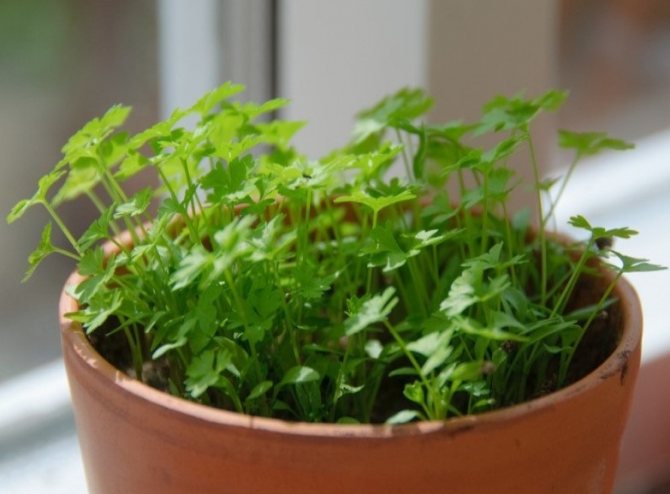

In the soil on the site, parsley can be planted anywhere - shading or wind does not affect the development of the plant. The variety is also not important - you can take a mixture of seeds without taking into account the growing season and the maximum height of the shoots. For apartment conditions, varieties that are demanding on space and nutrition are not suitable. The main characteristics that are recommended to pay attention to:
- Short growing season. Early ripe varieties of parsley will be the best choice for the windowsill - the greens will appear quickly, and after cutting it, you can sow a new one.
- Compactness. Varieties with a powerful root system that can grow up to 50 cm in height and are no longer suitable for growing in an apartment - you need a large, deep container and a lot of space.
- Resistant to low temperatures. It is better to choose those types of greens that can withstand a cold snap - they often put notes on the packaging about their purpose for greenhouses or balconies.
Parsley varieties are divided into root and leaf. For the first, growing on the windowsill is not the best option - and it is easier to prepare from the warm season. When planting a plant in greenery, you can choose between classic and curly species. The taste of these plants does not differ much, but it is widely believed that the curled leaves are more suitable for decoration. The best early maturing varieties for growing in an apartment are as follows:
- Green pearls;
- Curly Sue;
- Carnival;
- Bogatyr;
- Vorozheya;
- Khanachka;
- Prima;
- Beads;
- Breeze.
Attention! When buying seeds, you need to look at the dates - if they are expired, then the germination rate will be extremely low.
Top dressing
Top dressing should be done a month after germination. Just do not add a lot of fertilizers, since this way the greens will not be thicker, and the excess will be deposited in the form of salts.
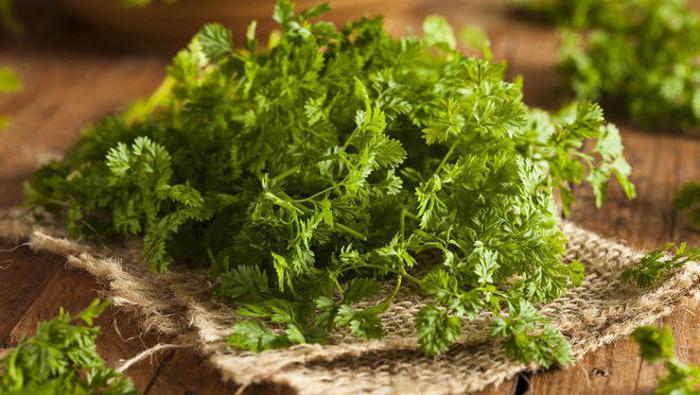

Growing in pots and outdoors is different. It is desirable to carry out top dressing with vermicompost. There are products in liquid form. Top dressing should be done every 2 weeks at the dose indicated on the package. Complex fertilizers are suitable for vegetables.
Features of growing parsley on the window
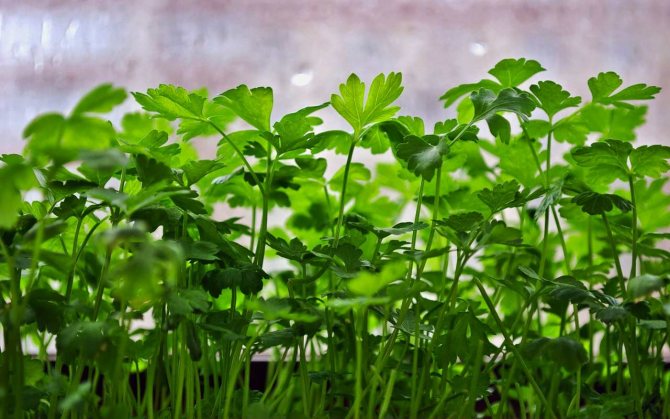

Growing green parsley on a windowsill is a way to get fresh produce throughout the year, including in winter. But, in order to obtain a sufficient amount of the crop, you need to put several containers and plant vegetation at intervals of 10-15 days.You can plant a plant with rhizomes and seeds - 1 method increases the green mass faster, and it is long-lasting.
An important condition for growing parsley on a windowsill is the mandatory thinning of plants in pots. The root system of this plant, depending on the variety, can grow rapidly - if the nutrient components are not enough, then there will be no harvest either. The distance between individual roots should be at least 3-4 cm. Not the first leaves that have appeared should be cut off - it is better to let the plants grow stronger.
Thinning of seedlings
How to grow parsley at home on a windowsill so that the results are pleasing? Dense seedlings should be thinned out. Greenery grows as a bush, and therefore every plant needs space and light to get strong shoots. Leaf parsley is thinned out 2 weeks after germination. There should be 5 cm between the plants, with growth it is necessary to repeat the procedure so that it is 10 cm.
Why is this distance required? In the garden, 20-25 cm is left between the plants. And since the greens in the boxes and pots do not grow, so less space is needed. But this applies to leafy parsley. There is a variety Mooskrause 2, bred by the Germans, and they grow herbs in the kitchen. Therefore, this parsley has compact tops and roots.
What you need to grow parsley
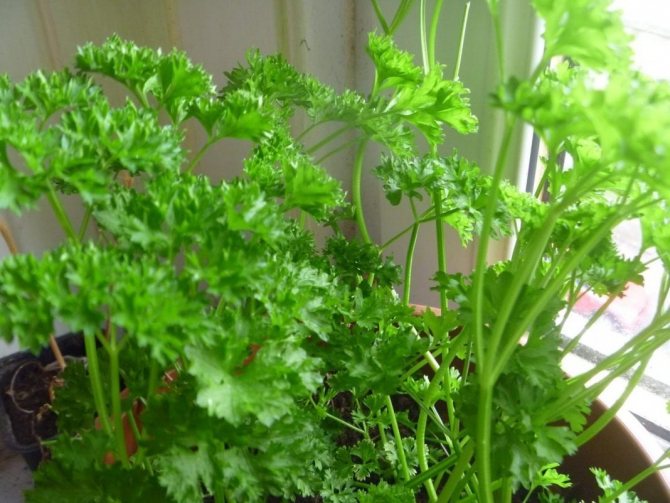

Parsley is classified as an unpretentious plant, for the cultivation of which you do not have to put much effort. But, even with the right choice of the variety, it is imperative to take into account the temperature regime - this indicator is largely tied to the location of the pot in the house. The amount of a possible harvest depends on the choice of the composition of the soil, the pot, compliance with the irrigation and lighting schedule. If all conditions are met, then you can harvest fresh greens throughout the year.
Choosing the best place
It is better to put a container with parsley in a house or in an apartment on a windowsill - this way there will be more sunlight for the bushes. If the windows face different sides in the room, then it is better not to put the container to the north. The best place for placement is the southern windowsill. If the windows face west or east, then it will be fine for parsley there too. But, you need to consider the following points:
- When airing the room, it is better to put the container aside - a draft can greatly affect the general condition of the vegetation.
- With a lack of natural sunlight, the stalks will tilt towards the window, therefore, be sure to turn the container.
- When the length of the day in spring increases, be sure to shade the container from bright light.
Attention! With a short daylight hours, parsley will not have enough light. In order for the plant to develop normally, it is recommended to supplement it with phytolamps.
Capacities
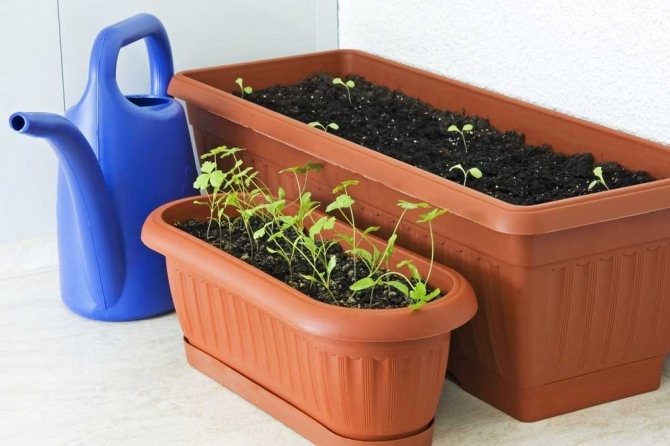

When choosing a container for planting seeds or rhizomes of parsley, it is recommended to pay attention to deep and spacious containers. In this case, it is necessary to take into account the size of the window sill and the appearance. The capacity should stand firmly in the allocated place and not spoil the design of the room with its appearance. Determining the normal capacity of the pot, take into account the following points:
- mandatory drainage of at least 2-3 cm;
- the earth layer is about 10-15 cm;
- stock of sides 2-3 cm.
To drain excess water, drain holes and a sump must be provided. With these characteristics of the container, you can choose pots or other similar containers. Any materials are suitable - plastic, clay, wood. But, if it is supposed to use a metal container, then it is better to choose a stainless steel and lay a moisture-proof material. Seedling containers, when germinating seeds, can be used, but as the roots grow, transplantation into vessels of greater capacity is required.
Ground mix
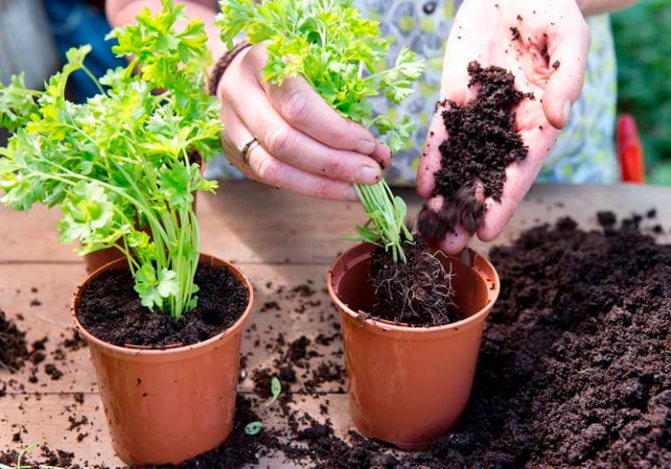

Under natural conditions, this plant develops normally on any type of soil - all the necessary substances are there. If you plant parsley in a confined space, you can buy the soil mixture at the store or prepare it yourself. From ready-made compositions, it is recommended to choose a neutral or slightly acidic earth. When mixing soil for planting at home, it is recommended to combine the following components:
- coarse sand;
- sod soil;
- rotted compost;
- peat.
To increase the nutritional value of the soil, complexes of mineral fertilizers are added to it. In the case of self-preparation of the soil mixture, it is imperative to carry out disinfection. For such a purpose, you can simply freeze the ground on the street - 5-7 days, followed by spilling the soil with a manganese solution. Alternatively, steaming in the oven.
Attention! To lower the acidity level of the earthen mixture, it is recommended to add potassium-phosphate additives to the composition.
Planting root crops
The size of the root vegetable depends on how many buds it will have and how many leaves will grow. The root must be dug up in the fall or purchased from the store. Before landing, it must be inspected for damage.
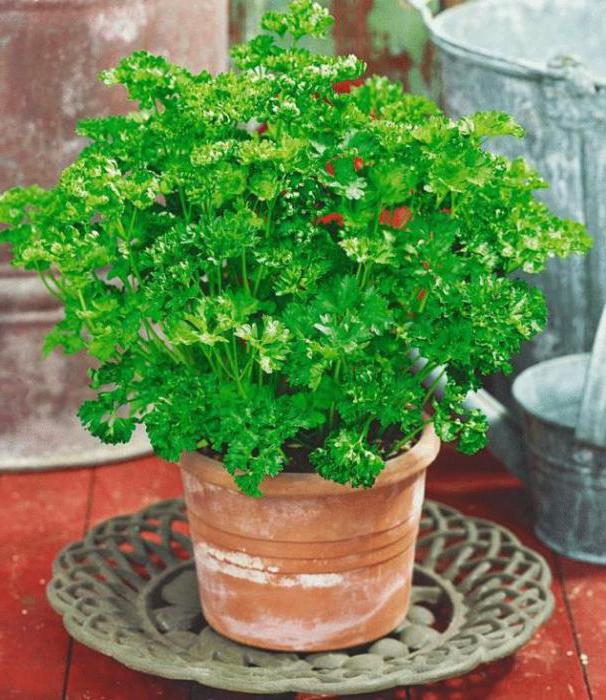

It is advisable to disinfect the containers before planting with a weak solution of potassium permanganate. If ordinary garden soil is used, then it is enriched with mineral fertilizer. You can prepare the mixture yourself: garden soil (70%) is mixed with turf (15%) and humus (15%). You also need to add phosphorus fertilizer and lime. This mixture can be purchased at your garden store.
Features of the preparation of rhizomes and seeds
You can plant parsley in a container for growing herbs on a windowsill with rhizomes and seeds. But, to increase the success of the event, it is imperative to carry out preliminary preparation of the planting material. It includes the selection of normal seeds and roots, disinfection and germination. If roots are used for planting, then you need to take specimens that have many active buds, and in the case of seeds, look at their expiration date.
Seed planting
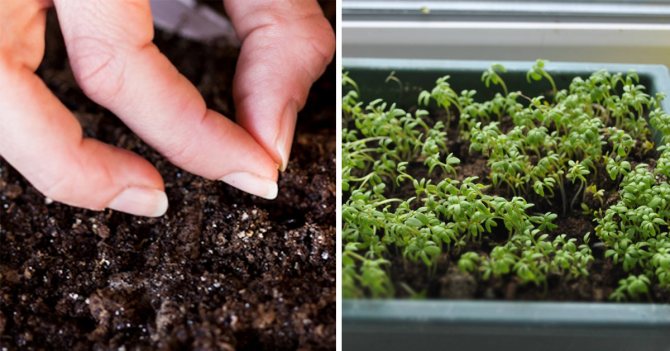

When growing parsley on a windowsill from seeds, you can get the first harvest only 3-4 weeks after sowing. The technique takes a lot of time and effort, but if you follow the rules, the plant will last at least 2 years. Seeds germinate for a long time, but the rate of pecking can be increased - the seeds are soaked for 24 hours in warm water with the addition of root, epin or another root formation stimulant. When the seeds have hatched, they can be planted:
- The planting depth for parsley is 6 mm to 15 mm.
- The distance between individual holes is at least 5 cm.
- Before the seedlings appear, the container is covered with foil.
During germination, the container should be placed in a place with good lighting and temperatures ranging from 17ºC to 20ºC. It is imperative to loosen the surface of the soil when it is compacted and make sure that mold does not appear. If, when the first shoots appear, the planting turns out to be dense, then the plants need to be thinned out after the formation of 2-3 true leaves. Watering young plants until the first harvest is necessary at least 2-3 times a week.
Planting root crops
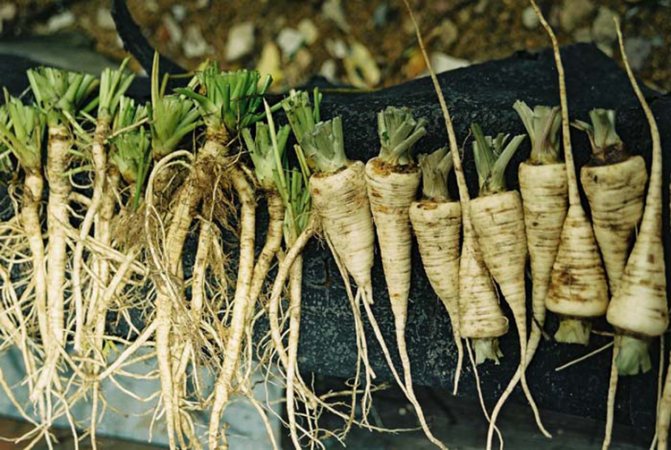

When planting parsley root crops to get greens on the windowsill, you need to pick up large roots weighing 65 g or more. With a long root crop, it can be trimmed and sprinkled with wood ash or crushed activated carbon. The retained length to the apical bud is from 12 cm to 15 cm. To accelerate development, it is recommended to treat the rhizomes with a growth and root formation stimulator before planting. Planting rates:
- The distance between individual plants is at least 3 cm.
- The growth points must be located above the soil surface.
- The container must be darkened for the acclimatization period.
- Before the first leaves appear, the temperature is 12ºC to 16ºC.
On a note! Top dressing can be started only after the first greens appear - no more than 5 g of complex formulations per 1 liter of water no more than 1 time per 30 days.
Caring for plants in a container
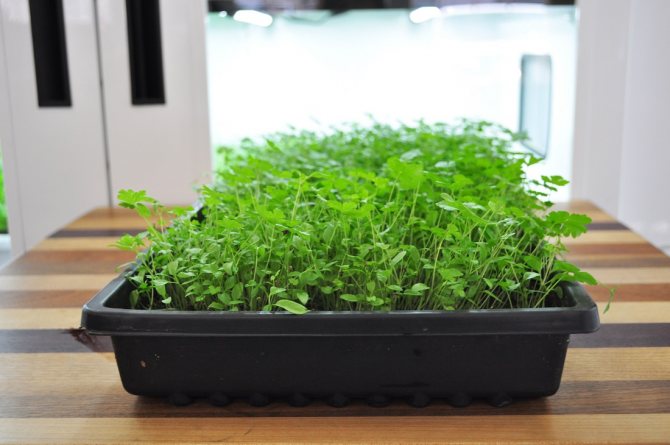

Parsley cannot be classified as a demanding plant - this green grows normally in a limited amount of soil. But, like for any other vegetation, when growing on a windowsill, it is imperative to observe the norms of agricultural technology - feeding, a stable irrigation schedule, thinning. It is equally important to ensure normal humidity, lighting and temperature.
Thinning young growth
The first shoots of parsley appear only 2-3 weeks after sowing. At high density, it is imperative to thin out - for young bushes, intervals of 3-5 cm are sufficient, but as they grow, the distance should be increased to 10 cm.For open ground, 25 cm is a normal takeoff. But with limited space in the container, parsley does not have enough space for full-scale development of the root system and the formation of a large leaf volume. Such rules should be attributed only to growing vegetation for greens - if you need to grow rhizomes, then the run up between the bushes is increased.
Temperature
When parsley is grown indoors in winter, you need to find a place to place it so that the temperature is neither low nor high. With hypothermia, the development of the plant slows down, and the gain of green mass can be completely stopped. In case of elevated temperatures, the soil in the container and the leaves dry out quickly, resulting in reduced yields. Optimum performance should be between + 15ºC and + 20ºC.
Lighting
The duration of daylight hours, in the late spring and summer seasons, is sufficient for the normal development of greenery. For the winter, you need to prepare devices for supplementary lighting of vegetation in a container. For this purpose, ordinary fluorescent lamps or devices with increased ultraviolet radiation are suitable. The duration for which the lamps are turned on is determined by the length of daylight hours - you need to get up to 8-10 hours of sun.
Humidity
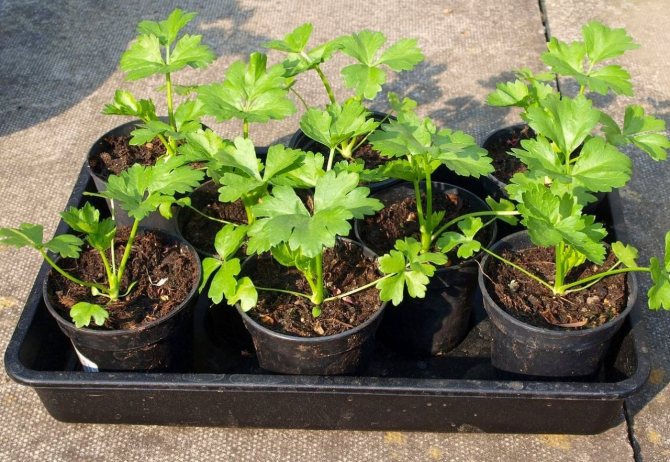

Moisture from parsley leaves with increased dry air will rapidly evaporate, which will harm not only the green mass, but also the roots. By placing the container on a windowsill in winter, the heat from the battery will reduce humidity. Increasing watering does not solve this problem - there is a risk of decay of the root system. To increase the humidity in the room near the container, it is recommended to install a humidifier or put a container with water. In such a vessel, snow or ice can be placed to reduce the temperature.
On a note! To increase the humidity in a room where there is vegetation on the windowsill, it is recommended to put a damp towel on the radiator, and lower its tip into a basin of water.
Watering
Parsley can be attributed to moisture-loving vegetation - water must always be present in the soil. But, excessive waterlogging will also negatively affect the condition of green bushes. Plants need to be watered at least 2 times a week - in order to develop a normal schedule, subject to variable humidity in the room, you need to monitor the condition of the soil - drying of the top layer of the earth is the main indicator.
Top dressing
If the soil mixture is high in nutrients, top dressing is not necessary. But, to build up green mass, it is better to regularly carry out such a procedure. Once a month, you can use a complex fertilizer, which is diluted in water for irrigation. In order not to be mistaken in the proportions, you need to carefully review the instructions for the drug and follow the rules. The main limitation is no more than 5 g per 1 liter of water. If the composition is positioned as highly concentrated, then the amount of the product should be reduced by 2 times.
Disease and pest control
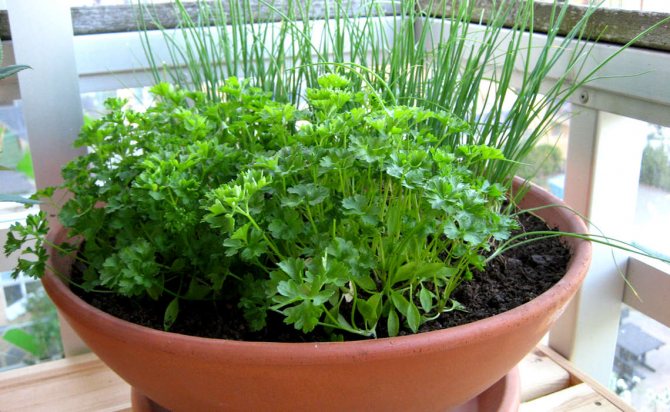

The main reason for the appearance of diseases and pests on parsley lies in the violation of the conditions of detention. When the temperature and humidity are too high or too low, white spot and powdery mildew are often found on the plant. To eliminate such fungal diseases, you need to treat the entire planting with phytosporin. The main parasite that appears on parsley is aphid. To destroy it, phytoverm should be used. But, during processing, it is imperative to adhere to the deadlines for passing the harvest indicated on the package, since you can get poisoning with chemicals.
Common growing mistakes
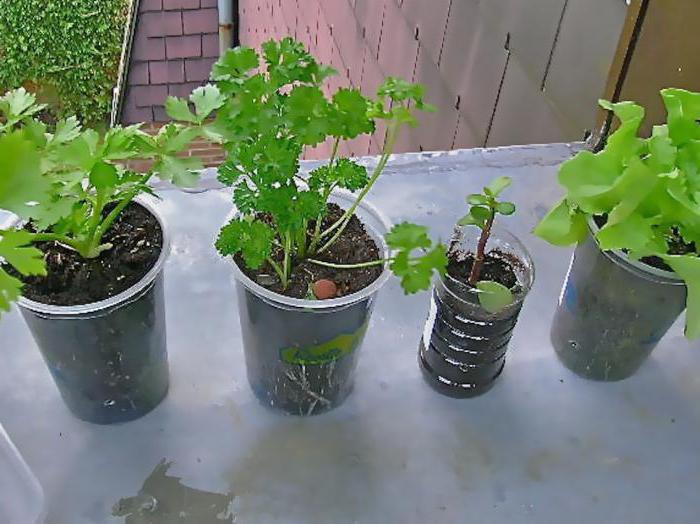

When growing parsley in a container for the first time, many make mistakes in the care and maintenance of the general atmosphere, due to which the planted vegetation dies or does not give a normal harvest. The most common problem is the absence of seedlings or their late appearance, which is solved by lowering the seed depth when sowing greenery. They are also often faced with such violations:
- excessive watering frequency;
- inconsistency in room temperature;
- violations of standards for disinfection;
- lack of light or weakness of supplementary lighting;
- excessive soil density;
- small container capacity.
To eliminate problems with herbs, you need to re-examine the features of planting and caring for parsley at home and highlight those points that are not followed. If there are no violations of the norms, then you need to carefully examine the greens and rhizomes - parasites and diseases can also lead to a lack of harvest or damage to it. If rot is found, it is recommended to clean the container and start over.
Contraindications
Harm can be done to the body only if the greens are consumed without measure. Parsley contains myristicin, which in excess can cause headaches, hallucinations, nausea, overexcitation, weight loss, and muscle cramps.
You should not take medicines with parsley for pregnant women, patients with oxaluria, urolithiasis, diseases of the bladder and nephritis. When feeding a child, it is also not advisable to use parsley, because it contains a spicy essential oil. If you follow these tips, then parsley will be good for your health. Moreover, you can not buy it, but grow it at home.
Harvesting and storage
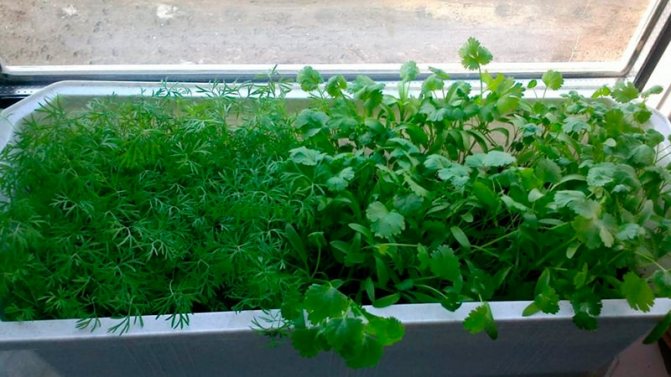

You can cut off parsley only when the leaves reach 10-12 cm in height. It is best to use garden shears for cutting. When pruning, it is imperative to leave hemp with a height of 1 to 2 cm - this will preserve the main buds from which a new crop will grow. If you leave half of the green mass when cutting, its amount will recover faster.
Attention! If all the leaves from the plants have been cut off, then for an accelerated recovery, it is recommended to immediately feed.
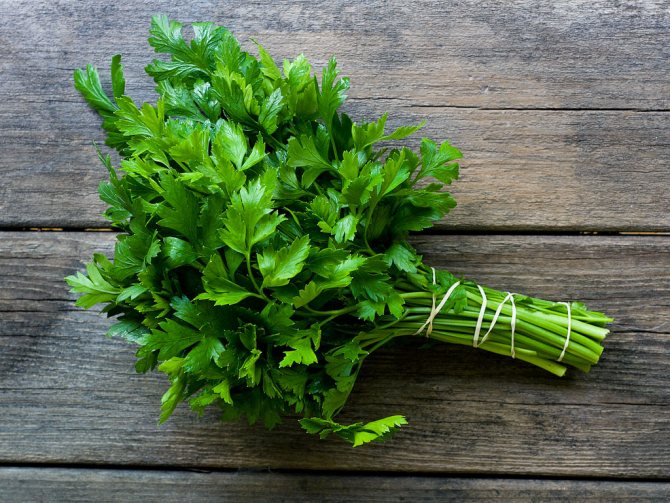

For storing parsley leaves, different methods are applicable - put in the refrigerator or salt. The simplest and most common technique is bundle drying. The leaves tied with a bouquet are simply hung in a dry, ventilated room, and after complete drying, they are wrapped in natural fabric. Freezing greens, completely retains freshness, but there are different options - ice cubes, whole bunches or slicing.
There are many ways to get a good harvest when growing parsley on a windowsill. Subject to the conditions of keeping and proper preparation of the container and soil, greens, regardless of the variety, will be present on the bushes in large quantities. When using top dressing, young vegetation will last for 2-3 years. But, when choosing seeds or rhizomes, it is better to take early maturing species.
Choice of capacity
This can be a pot, box, or container. The height of the pot should be not less than 25 cm... Clay pots are characterized by a porous structure that allows air to penetrate to the roots of the plant. In addition, excess moisture will evaporate faster in such a vessel.
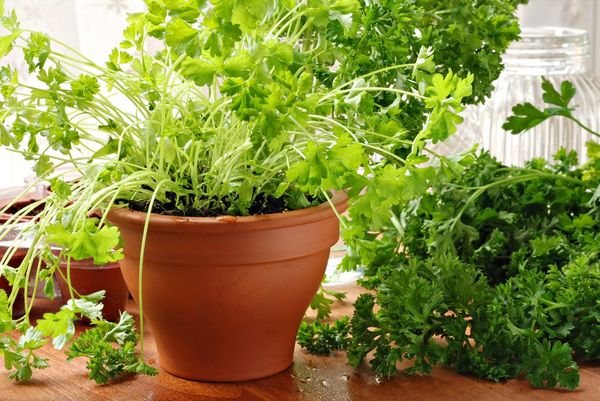

A plastic pot with a height of 25 cm is well suited for growing parsley
Plastic containers are more practical to use. Their disadvantage is that they do not allow air to pass through. Therefore, overflow will cause rotting of the plant roots.

